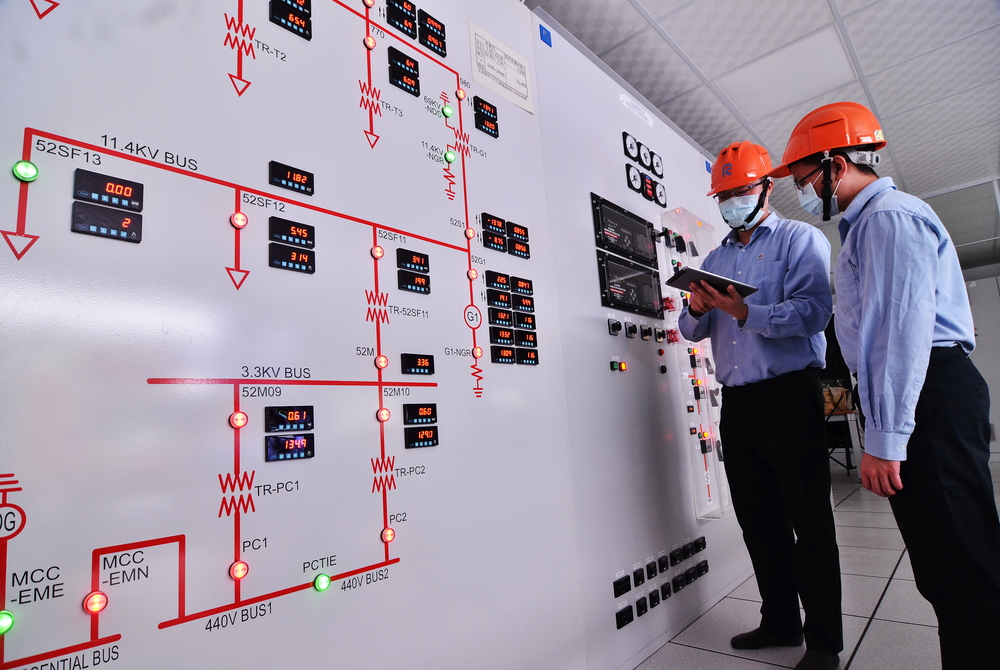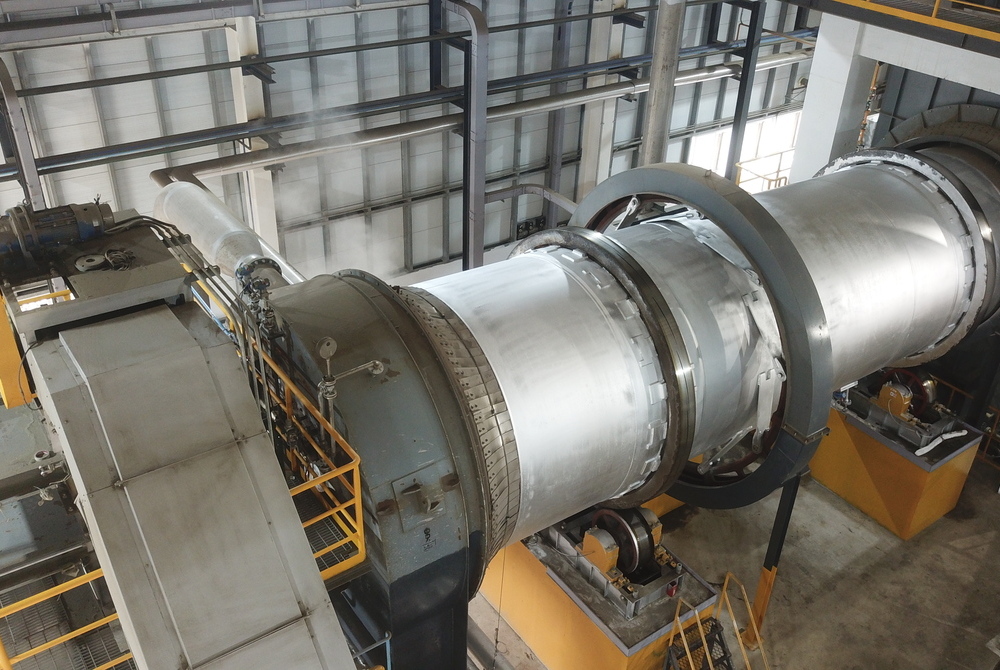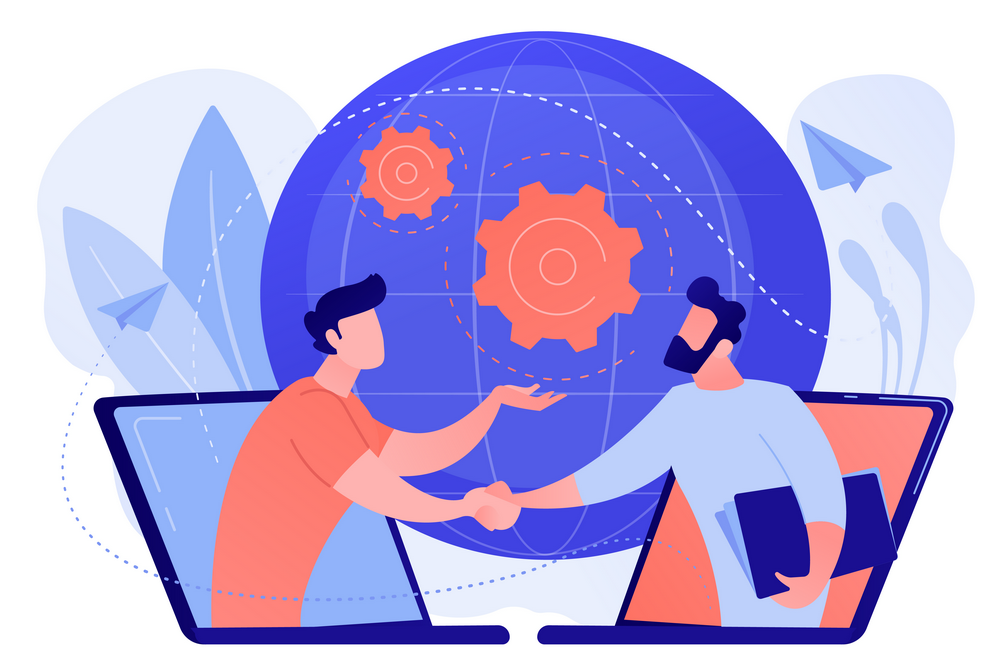GHG Management
FENC is committed to corporate sustainability actions for the long haul. With the establishment of short-, mid- and long-term GHG reduction targets for Production Business in 2022, FENC makes its pledge to reach net zero by 2050, which is to be realized through the five major low-carbon transition strategies. The aim is to mitigate the environmental impacts of GHG emissions and safeguard the sustainability of global ecosystems.
GHG Management Policies
- FENC Greenhouse Gas Management Operating Procedures
All FENC production sites comply with the FENC Greenhouse Gas Management Operating Procedures and conduct the GHG inventory annually based on the standards of ISO 14064-1:2018 or the Greenhouse Gas Protocol (GHG Protocol). Scope 3 emissions should be identified based on the principle of materiality and classified into the 15 categories in the GHG Protocol, such as purchased goods and services, fuel-related activities, upstream and downstream transportation and employee commuting. Data integrity and credibility have been guaranteed through the annual third-party verification since 2023, which exemplifies FENC’s rigorous approach and unwavering determination for improvement when it comes to GHG management. - Internal Carbon Pricing System
FENC has established an internal carbon pricing system to accelerate carbon reduction within the Company. The system is established based on international studies, such as the International Energy Agency’s World Energy Outlook and the World Bank's annual State and Trends of Carbon Pricing Reports. Considerations also include the internal and external carbon costs at FENC’s worldwide locations as well as analyses conducted over the industry's pricing methods, instruments and strategies. The pricing has been finalized at NT$1,500/tCO2e in developed economies and NT$1,000/tCO2e in emerging economies. The internal carbon pricing system was in 2024 after being presented to the Board. FENC adopts the Shadow Price method for internal carbon pricing, covering Scope 1 and Scope 2 GHG emissions, and the system encompasses two implementation approaches:
1. The system acts as an incentive for carbon reduction when evaluating the carbon benefits of energy and emission reduction projects.
2. The system serves as a reference during decision-making when calculating the carbon cost of each Business for the monthly management report.
The goals of implementing internal carbon pricing across FENC are as follows:
1. Drive energy efficiency.
2. Drive low-carbon investment.
3. Stress test investments.
4. Identify and seize low-carbon opportunities.
Note: The application scope of internal carbon pricing covers all business decision-making processes.
GHG Emissions in 2024
.png)
1.Data collection on scopes 1 and 2 accounts for 100% of the scope of this report.
2.Scope 2 emissions are accounted according to the market-based method.
Direct and Energy Indirect GHG Emissions
Unit: ktCO2e
| Petrochemical | Polyester | |||||||
| 2021 | 2022 | 2023 | 2024 | 2021 | 2022 | 2023 | 2024 | |
Direct Emissions (Scope 1) | 389 | 352 | 334 | 217 | 805 | 687 | 604 | 655 |
Energy Indirect Emissions (Scope 2: Market-based) | 152 | 150 | 127 | 70 | 537 | 474 | 465 | 397 |
| Biogenic Emissions | 25 | 24 | 18 | 13 | 0 | 2 | 4 | 0 |
Total | 541 | 502 | 461 | 287 | 1,342 | 1,161 | 1,069 | 1,052 |
GHG Emissions per Unit of Production (tCO2e / metric ton of production) | 0.23 | 0.24 | 0.25 | 0.21 | 0.26 | 0.24 | 0.23 | 0.22 |
| Textile | Total | |||||||
| 2021 | 2022 | 2023 | 2024 | 2021 | 2022 | 2023 | 2024 | |
Direct Emissions (Scope 1) | 146 | 124 | 78 | 62 | 1,340 | 1,163 | 1,016 | 934 |
Energy Indirect Emissions (Scope 2: Market-based) | 326 | 245 | 214 | 197 | 1,015 | 869 | 806 | 664 |
| Biogenic Emissions | 0 | 11 | 11 | 31 | 25 | 37 | 33 | 44 |
Total | 472 | 369 | 292 | 259 | 2,355 | 2,032 | 1,822 | 1,598 |
GHG Emissions per Unit of Production (tCO2e / metric ton of production) | 0.96 | 0.82 | 0.74 | 0.72 | 0.29 | 0.28 | 0.26 | 0.24 |
Unit: ktCO2e
| Petrochemical | Polyester | |||||||
| 2021 | 2022 | 2023 | 2024 | 2021 | 2022 | 2023 | 2024 | |
Direct Emissions (Scope 1) | 389 | 352 | 334 | 217 | 805 | 687 | 604 | 655 |
Energy Indirect Emissions (Scope 2: location-based) | 152 | 150 | 127 | 70 | 537 | 486 | 488 | 433 |
| Biogenic Emissions | 25 | 24 | 18 | 13 | 0 | 2 | 4 | 0 |
Total | 541 | 502 | 461 | 287 | 1,342 | 1,173 | 1,092 | 1,088 |
| Textile | Total | |||||||
| 2021 | 2022 | 2023 | 2024 | 2021 | 2022 | 2023 | 2024 | |
Direct Emissions (Scope 1) | 146 | 124 | 78 | 62 | 1,340 | 1,163 | 1,016 | 934 |
Energy Indirect Emissions (Scope 2: location-based) | 326 | 245 | 214 | 197 | 1,015 | 881 | 829 | 700 |
| Biogenic Emissions | 0 | 11 | 11 | 31 | 25 | 37 | 33 | 44 |
Total | 472 | 369 | 292 | 259 | 2,355 | 2,044 | 1,845 | 1,634 |
Note: 1. The scope of data collection covers 21 production sites, which account for 100% of the major production sites of the production business. The consolidation approach for emissions is operational control. 7.The boundary of data collection for GHG emissions per unit of production for the Textile Business does not include FEAZ, FENV and FEAV. |
Direct and Energy Indirect GHG Emissions per Unit of Production
Unit: tCO2e / metric ton of production
.png)
In 2024, direct and energy indirect GHG emissions from scopes 1 and 2 were down by 12% from the previous year, and GHG emissions per unit of production were cut by 8%. The energy and emission reduction projects as well as lower petrochemical production were the main factors behind the emission decrease.
Other Indirect GHG Emissions (Scope 3)
Unit: ktCO2e
| Petrochemical | Polyester | ||||||
2021 | 2022 | 2023 | 2024 | 2021 | 2022 | 2023 | 2024 | |
Purchased Goods and Services | 2,219 | 2,484 | 2,200 | 1,845 | 4,763 | 4,461 | 4,467 | 4,354 |
Capital Goods | 6 | 20 | 17 | 21 | 38 | 67 | 60 | 86 |
Fuel- and Energy-related Activities | 84 | 89 | 82 | 50 | 291 | 247 | 215 | 215 |
Upstream Transportation and Distribution | 92 | 66 | 53 | 0.05 | 137 | 146 | 151 | 182 |
Waste Generated in Operations | 5 | 7 | 4 | 4 | 4 | 4 | 4 | 5 |
Business Travel | 0.04 | 0.04 | 0.07 | 0.07 | 0.43 | 0.62 | 1.15 | 0.74 |
Employee Commuting | 0.40 | 0.47 | 0.43 | 0.26 | 19.63 | 19.46 | 19.14 | 3.49 |
Upstream Leased Assets | 0.76 | 2.16 | 2.20 | 2.02 | 0.37 | 0.52 | 1.52 | 1.34 |
Downstream Transportation and Distribution | 75 | 74 | 78 | 105 | 317 | 288 | 290 | 443 |
Processing of Sold Products | - | - | - | - | - | 2,824 | 2,731 | 2,697 |
Use of Sold Products | - | - | - | - | - | - | - | - |
End-of-Life Treatment of Sold Products | - | - | - | - | - | 294 | 287 | 328 |
Downstream Leased Assets | 0.01 | 0.10 | 0 | 0.10 | 0.06 | 0.08 | 0.19 | 0.18 |
Franchises | 0 | 0 | 0 | 0 | 0 | 0 | 0 | 0 |
Investments | 0 | 0 | 0 | 0 | 0 | 0 | 0 | 0 |
Total | 2,482 | 2,744 | 2,437 | 2,027 | 5,571 | 8,353 | 8,226 | 8,315 |
| Textile | Total | ||||||
2021 | 2022 | 2023 | 2024 | 2021 | 2022 | 2023 | 2024 | |
Purchased Goods and Services | 772 | 695 | 630 | 550 | 7,754 | 7,640 | 7,297 | 6,749 |
Capital Goods | 9 | 4 | 14 | 70 | 53 | 91 | 91 | 177 |
Fuel- and Energy-related Activities | 98 | 70 | 41 | 32 | 473 | 406 | 338 | 297 |
Upstream Transportation and Distribution | 11 | 8 | 20 | 18 | 240 | 220 | 224 | 200 |
Waste Generated in Operations | 3 | 3 | 2 | 1 | 12 | 14 | 10 | 10 |
Business Travel | 0.45 | 0.29 | 0.75 | 0.62 | 0.92 | 0.95 | 1.97 | 1.43 |
Employee Commuting | 5.24 | 10.39 | 6.67 | 12.11 | 25.27 | 30.32 | 26.24 | 15.86 |
Upstream Leased Assets | 3.57 | 0.46 | 0.43 | 0.30 | 4.70 | 3.14 | 4.15 | 3.66 |
Downstream Transportation and Distribution | 32 | 19 | 8 | 20 | 424 | 381 | 376 | 568 |
Processing of Sold Products | - | - | 78 | 169 | - | 2,824 | 2,809 | 2,866 |
Use of Sold Products | - | - | - | 0.01 | - | - | - | 0.01 |
End-of-Life Treatment of Sold Products | - | 0.34 | 68 | 74 | - | 294 | 355 | 402 |
Downstream Leased Assets | 0 | 0 | 0 | 0 | 0.07 | 0.18 | 0.19 | 0.28 |
Franchises | 0 | 0 | 0 | 0 | 0 | 0 | 0 | 0 |
Investments | 0 | 0 | 0 | 0 | 0 | 0 | 0 | 0 |
Total | 935 | 809 | 868 | 947 | 8,988 | 11,906 | 11,531 | 11,289 |
Note: 1. The disclosure of GHG emissions accounts for 100% of the major production sites of the prosuction business, and the emission data is consolidated following the control approach. |
Avid Support for Governmental Policies
- Climate Change Response Act, Taiwan
On February 15, 2023, the Climate Change Response Act was promulgated in Taiwan. The law stipulates the levying of carbon fees as one of the policies to thrust Taiwan towards net zero by 2050. In August 2024, three delegated regulations governing the carbon fee system were announced, marking the official beginning of the carbon pricing era. Efforts to reduce GHG emissions already began at FENC production sites in Taiwan, which will submit voluntary reduction plans to the authorities by June 30, 2025 to win preferential rates. - Decree 06/2022/ND-CP Regulations on Reduction of Greenhouse Gas Emissions and Protection of the Ozone Layer, Vietnam
In 2022, Vietnam enacted Decree 06/2022/ND-CP, which governs the reduction of GHG emissions, protection of the ozone layer and development of carbon market. FEPV is among the enterprises on the control list and must start submitting a GHG inventory report annually beginning in 2025 and a GHG reduction plan covering a period between 2026 and 2030 by the end of 2025. Starting in 2027, the plant must submit a GHG reduction report annually. FEPV has made the GHG inventory an annual practice since 2021 with third-party verification. The plant also has multiple emission reduction projects in the pipeline, ready to provide projects, reports and full support to advance government policies. - Interim Regulations for the Management of Carbon Emission Trading and the carbon quota provisions under Trial Measures for Shanghai Municipality on Carbon Emission Management, mainland China
On May 1, 2024, the Interim Regulations for the Management of Carbon Emission Trading, which governs the national carbon trading system in mainland China, went into effect. FEIS, though currently not considered as being within the polyester industry, is within the demonstration zone for the carbon emission trading pilot program. The plant ensures compliance with governmental mandates through various emission reduction projects and control measures with annual energy and carbon reduction targets established at the end of each year. Monthly meetings are held to track and review energy consumption and carbon emissions with proposals for improvement measures and the designation of departments responsible for implementation. FEIS also established the carbon emission management team, carbon trading decision-making team, carbon trading capital trading team and carbon trading confirmation team to track the daily fluctuation of carbon pricing, and present the report at the monthly energy conservation meetings to monitor the entire carbon trading process.
Carbon Quotas and Emissions of FEIS
Unit: ktCO2e
.png)
1. The quota in 2024 were estimated emissions; the actual quota is yet to be verified by the government.
2. The 2023 carbon allowance was updated to reflect the actual allocation by the authority.
Value Chain Collaboration
- Carbon Reduction Alliance with Value Chain Partners
Upon the invitation of Nike, FENC’s Textile Business joined the Manufacturer Climate Action Program developed by the Sustainable Apparel Coalition and proposed scopes 1, 2 and 3 reduction targets that meet the science-based standards. In October 2024, the Textile Business submitted the commitment letter to SBTi, joining the collective action to fight climate change with its global peers.
OTIZ has been closely collaborating with its customer, Autoliv. To achieve the carbon reduction targets set by Autoliv, OTIZ has been purchasing low-carbon electricity, enhancing energy efficiency and adopting low-carbon raw materials and logistics. The targets set by Autoliv are identical to those that have been established by FENC, which are to reduce 50% carbon emissions by 2030. OTIZ will continue to maintain close relationship with its customers, working together towards the common goal of reducing carbon emissions.
- Regular Tracking of Carbon Reduction Performance by Brand Customers
FENC conducts product life cycle assessments of its major products and provides the results, including the product carbon footprint, to downstream customers in order to guide them towards low-carbon products. To reduce the carbon footprint, FENC provides holistic solutions that embody circularity by converting recycled and biomass materials to meet the value chain customers’ needs in emission reduction.
The Company also reports GHG reduction targets and progress on platforms established by CDP, EcoVadis and the brand customers. For instance, the Textile Business is required by customers, such as Nike and adidas, to report monthly energy consumption and develop carbon reduction strategies. Each quarter, the plant confirms the progress towards carbon reduction targets and ensures tracking, management and inspection.
Advocating and Participating in Climate Change Initiatives and Associations
At one of the main zones of the 29th session of the Conference of the Parties (COP29) to the United Nations Framework Convention on Climate Change in 2024, Dr. Ching-Ying Yu, Associate Professor of Yuan Ze University, an affiliate under Far Eastern Group, delivered two speeches that featured FENC’s circular economy products and carbon reduction performance. Additionally, FENC is a member of the Center for Corporate Sustainability, whose mission includes addressing the challenges of climate change, mitigating overexploitation, minimizing environmental impact and safeguarding a sustainable ecological habitat.


















